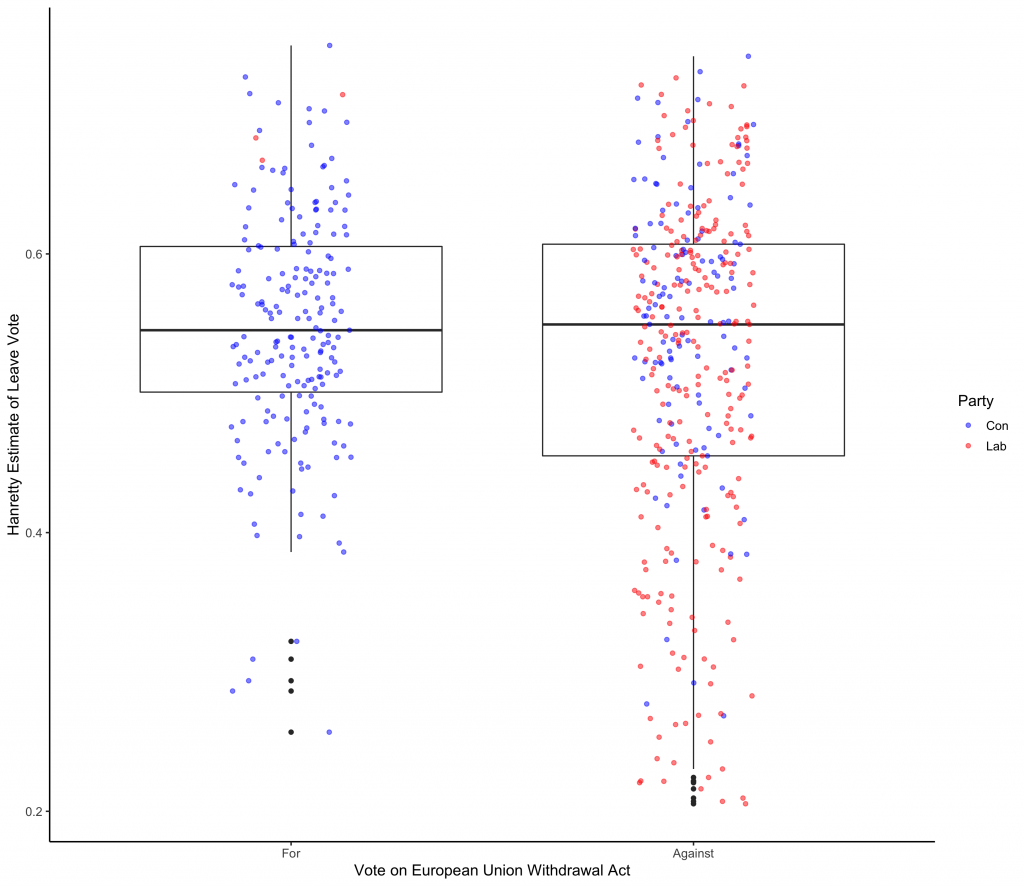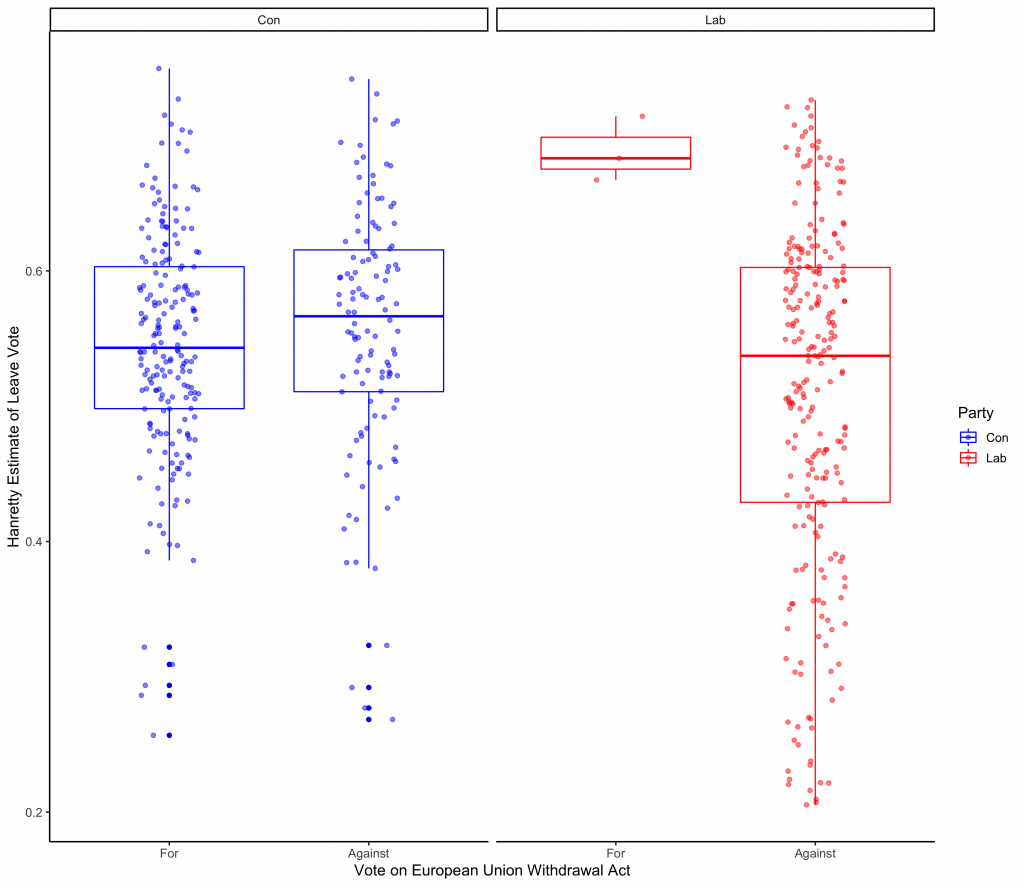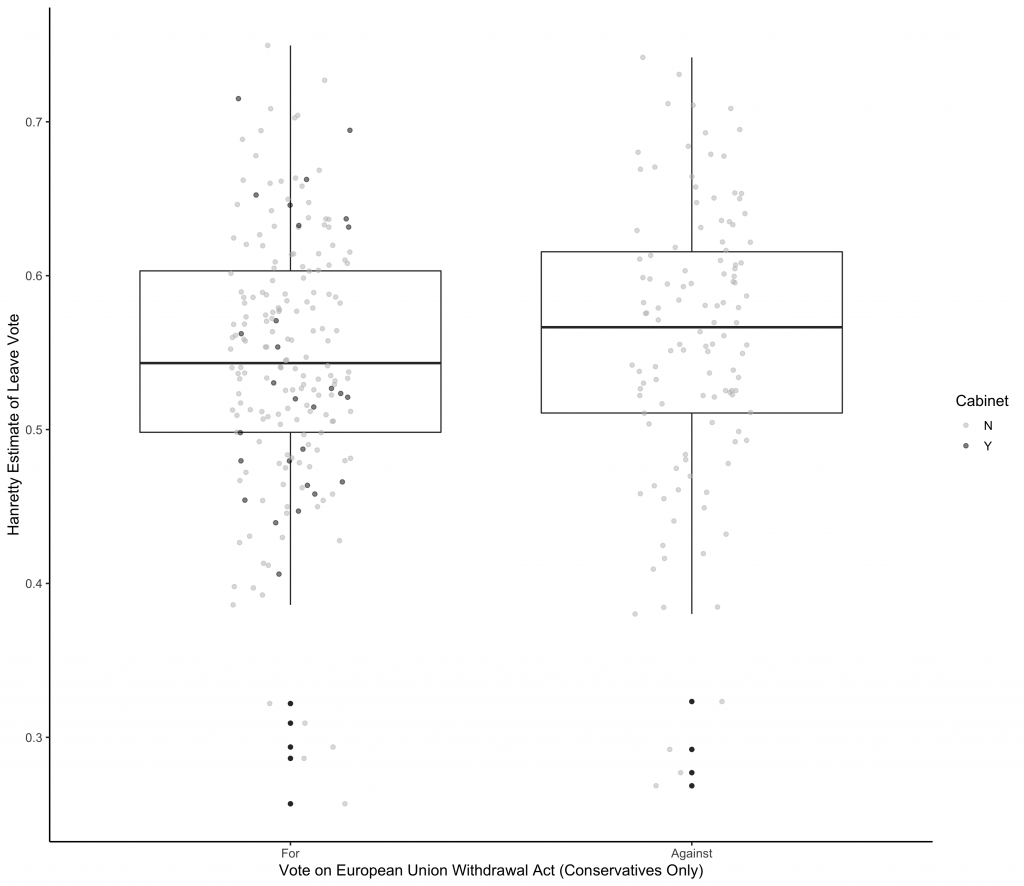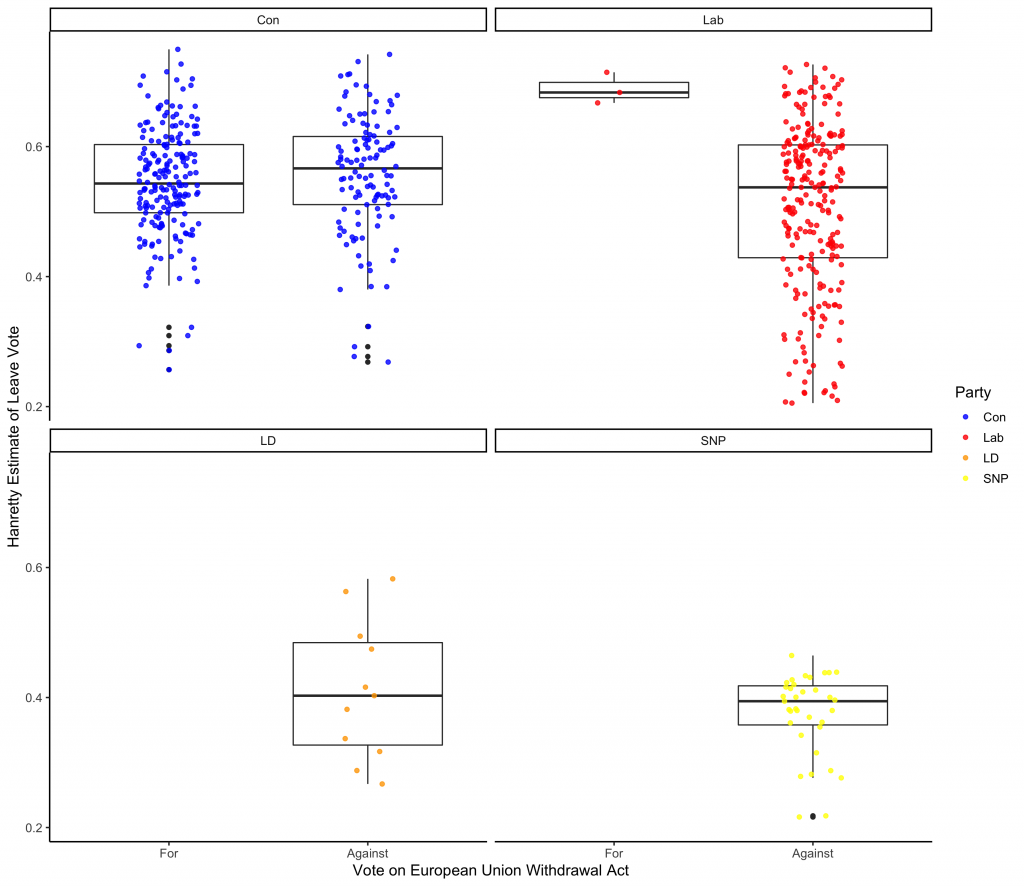On January 15, 2019, Prime Minister Theresa May’s Brexit deal suffered a defeat of historic proportion in the House of Commons: 432 MPs voted against and 202 for the ‘EU Withdrawal Act’, with a staggering margin of 230 votes. But how do the MP positions on May’s deal compare with the constituency-level votes on the 2016 referendum? [i]
Notably, almost all the intra-party variation in voting takes place on the Tories’ side of the aisle. Only 3 Labour MPs bucked the party line and voted for the deal, whereas 118 Tories voted against May’s proposal. The plot below shows the distribution of constituency vote on the Brexit referendum by MPs voting either for or against the Brexit deal.

The graph shows that even though the median constituency had similar levels of Leave votes, Labour clearly dominates among constituencies which voted predominantly Remain. That pattern becomes even clearer if we split out the two parties, as in the graph below. The only Labour votes for May’s Brexit deal came from districts where Leave dominated. Additionally, there appears to be a tendency for the Nay votes among Tories to come from MPs representing districts which voted Leave. In other words, there is a slight indication across the parties that a strong Leave constituency may have pressured MPs to vote against their party leadership’s position.

That, however, is less true if we just look at Cabinet members/attendees. They were more generally drawn from the Remain end of the distribution. So, presumably, they faced less local ‘Leave means Leave’ opposition when considering this vote. Though, of course, local Tory members are not the same as the local electorate, and there might still be a backlash for supporting May’s deal.

Finally, for the sake of quasi-completeness, the last graph includes SNP and LibDem MPs as well. Clearly the SNP had a particularly easy case when deciding how to vote as they represent very pro-Remain constituencies.

[i] All estimates of the Brexit vote at the constituency level come from Chris Hanretty (@chrishanretty). Votes on the EU Withdrawal Act night come from Guardian and payroll/cabinet position are based on my own coding.






